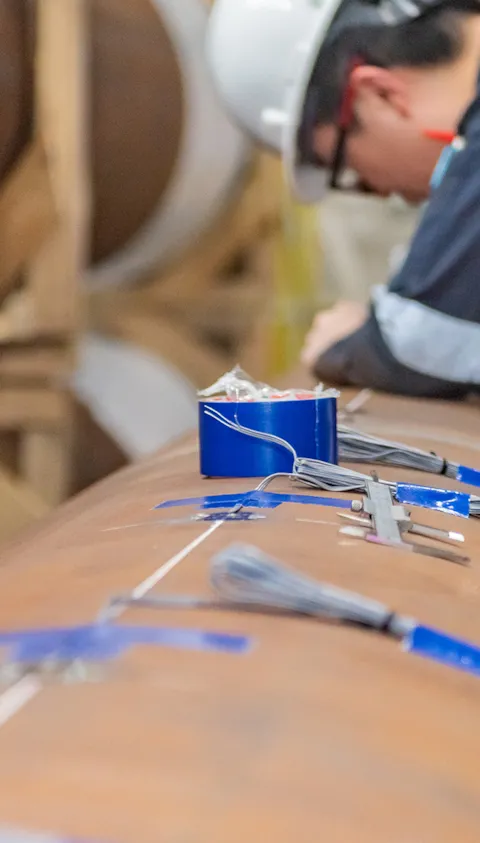

DNV provides engineering critical assessment (ECA) based on limit load for corrosion, fracture mechanics, and fatigue analysis of crack-like flaws. The outcome of the ECA provides customers with realistic acceptance criteria for flaws/defects related to a given material and design. This approach allows for the possibility of reducing the level of required repair welding during offshore pipeline installation without compromising safety. The ECA can also be performed to determine fracture toughness requirements and assess whether post-weld heat treatment (PWHT) can be waived following the welding of thick plates and tubular joints for offshore structures.
Limit load analysis for corroded structures and components, as well as fracture mechanics assessments, can also be used to evaluate the remaining life and extend the lifetime of assets during operation. DNV’s expert team possesses in-depth knowledge of applicable codes, including API 579-1/ASME FFS-1: 2021, BS7910:2019, and DNV-RP-F101 Corroded pipelines. We conduct deterministic or probabilistic Fitness-for-Service (FFS) assessments and remaining life assessments to ensure a reliable and safe extension of an asset’s lifetime.
To support integrity assessments, we utilize advanced finite element analyses (FEA) and computational fluid dynamics (CFD) software. These tools help derive stress, strain, and displacement inputs for the analyses.
DNV’s laboratory is equipped with state-of-the-art facilities for conducting necessary testing to determine the parameters of a material’s properties. Additionally, we employ advanced finite element analysis programs such as ABAQUS and CRACKWISE for deterministic limit load, fracture mechanics, and fatigue assessments. For probabilistic assessments, we use DNV’s general purpose probabilistic analysis software, PROBAN.
Typical equipment and assets that benefit from ECA and FFS approaches include:
- Subsea pipelines and risers
- Offshore jacket structures (fixed or floating platforms) and FPSOs
- Process equipment and piping
- Offshore wind substations
- Offshore wind substation platforms and floating wind substructures
- Offshore wind installation vessels
- CO2 and H2 transportation pipelines
- Onshore NG/LNG pipelines and facilities
- Rail track components
- Offshore cranes.